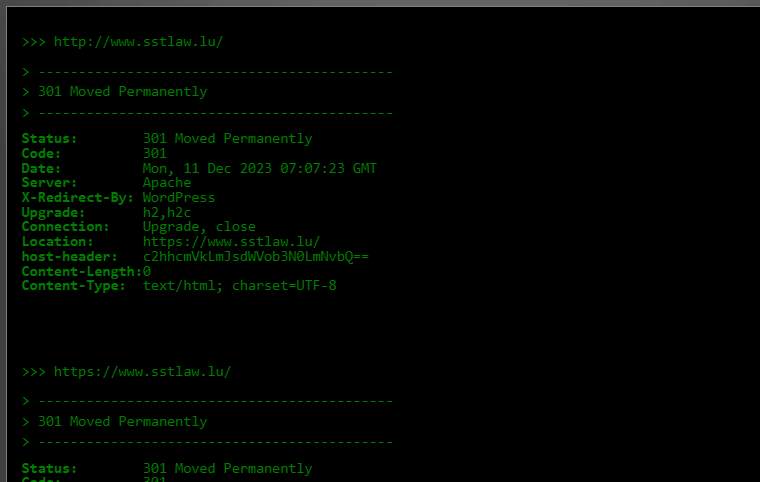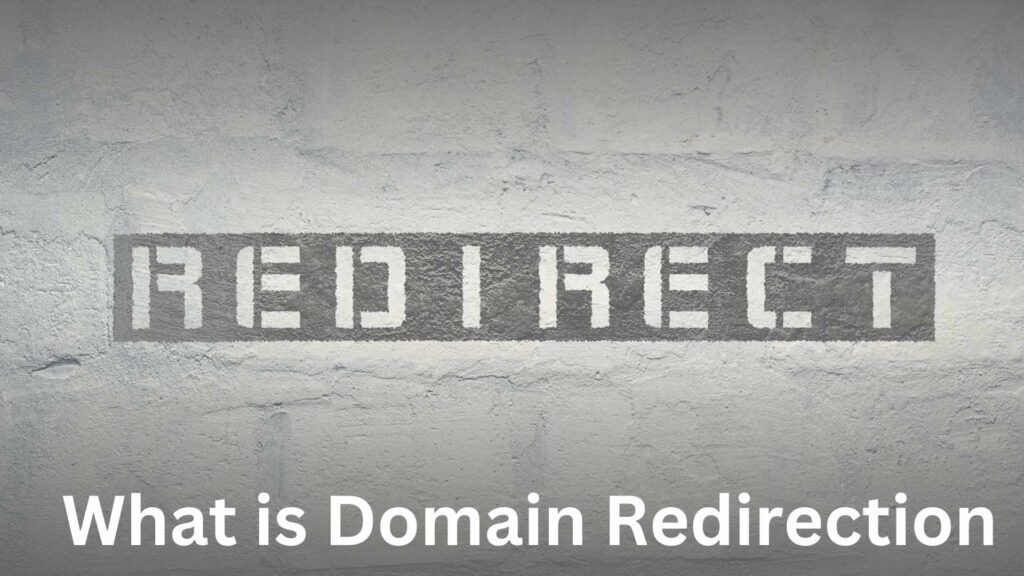As an experienced SEO expert, I understand the significance of domain redirection in maintaining a seamless user experience and preserving search engine optimization efforts during website changes. Whether you’re rebranding your business, consolidating multiple websites, or restructuring your website, implementing domain redirection correctly is crucial. In this comprehensive guide, I will walk you through the process of domain redirection, step-by-step, and provide you with valuable insights and practical tips based on my expertise in the field.
What is Domain Redirection?
Domain redirection, also known as URL forwarding, is a technique that allows website owners to direct traffic from one domain or URL to another. It plays a crucial role in ensuring that visitors who try to access the old URL or domain are automatically redirected to the new one. This helps maintain a seamless user experience and prevents users from encountering broken links or error pages.
Read about Domain vs URL Redirection
Types of Domain Redirection
To effectively implement domain redirection, it’s important to understand the different types of redirects available(301 vs 302). Here are the most commonly used ones:
- 301 Redirect: A 301 redirect is a permanent redirect that informs search engines and browsers that the original URL has moved permanently to a new location. This type of redirect passes the link equity and SEO value from the old URL to the new one. It is recommended for long-term changes such as domain migrations or permanent URL changes.
- 302 Redirect: A 302 redirect is a temporary redirect that indicates the original URL has moved temporarily. Unlike a 301 redirect, a 302 redirect does not transfer link equity or SEO value from the old URL to the new one. It is suitable for short-term changes like site maintenance or A/B testing.
- Meta Refresh: A meta refresh is a type of redirect that uses an HTML meta tag to automatically redirect users to a different URL after a specified time delay. While this type of redirect is less common and not recommended for SEO purposes, it can be useful in certain scenarios. Here is the details about Meta Refresh Redirection.
- JavaScript Redirect: JavaScript redirects use JavaScript code to redirect users from one URL to another. Although easy to implement, search engines may not follow JavaScript redirects, and they can potentially slow down page loading times. Hence, they are not recommended for SEO purposes.
- Canonical Redirect: A canonical redirect is used when there are multiple versions of a webpage with similar content. It informs search engines which version should be considered the canonical (preferred) version and directs users to that URL.
Importance of Domain Redirection
Domain redirection holds significant importance for website owners and SEO professionals alike. Here are some reasons why domain redirection is crucial:
- User Experience: Implementing proper domain redirection ensures that visitors are seamlessly redirected from old URLs or domains to new ones. This prevents users from encountering broken links or dead ends, enhancing their overall user experience on your website.
- SEO Preservation: Search engine optimization efforts can be preserved through effective domain redirection. When search engines encounter redirects, they consider the authority and ranking signals of the old URL and transfer them to the new URL. This helps maintain organic search traffic and prevents any negative impact on search engine rankings.
- Link Equity Transfer: Permanent redirects (301 redirects) transfer link equity from the old URL to the new one. This means that any backlinks pointing to the old URL will pass their SEO value and authority to the new URL, helping preserve your website’s organic search rankings.
- Brand Consistency: Domain redirection is crucial for maintaining brand consistency during rebranding or when consolidating multiple websites. It allows you to unify your online presence by directing visitors from different domains or subdomains to a single, cohesive website.
How to Implement Domain Redirection
Implementing domain redirection requires careful planning and execution. Here are the steps you should follow:
- Plan and Prepare:
- Clearly define your objectives for implementing domain redirection.
- Determine whether you need a permanent (301) redirect or a temporary (302) redirect based on your specific requirements.
- Identify the specific URLs or domains that need to be redirected.
- Create a comprehensive list of all existing URLs and their corresponding new destinations.
- Choose the Most Suitable Method:
- Server-side Redirects: If you have access to your server’s configuration files, server-side redirects such as .htaccess (Apache server) or web.config (IIS server) can be used.
- Content Management System (CMS) Plugins/Extensions: If your website is built on a CMS platform like WordPress, Drupal, or Joomla, install and configure plugins/extensions specifically designed for handling redirects.
- DNS-Level Redirects: Modify your DNS settings to point your old domain to the new domain or specific URL.
- Implement the Redirects:
- Server-side Redirects:
- Apache Server (.htaccess): Edit your .htaccess file and add
- Server-side Redirects:
redirect rules using Apache’s mod_rewrite module to set up 301 or 302 redirects. – IIS Server (web.config): Modify your web.config file and add rewrite rules using IIS’s URL Rewrite module to implement server-side redirects.
Read More about How to Fix Redirection issues
- CMS Plugins/Extensions: Install and configure a reputable redirect plugin/extension suitable for your CMS. These plugins/extensions often provide user-friendly interfaces for managing redirects without the need for extensive technical knowledge.
- DNS-Level Redirects: Log in to your domain registrar’s control panel and modify the DNS settings for your old domain to point to the new domain or specific URL. This method is useful when you want to redirect all traffic from the old domain without accessing the server directly.
- Test and Validate:
- Use browser extensions or online tools to ensure that the redirects are functioning correctly. Check that all redirected URLs are landing on the correct destination pages.
- Test different scenarios, such as typing in old URLs directly or clicking on external links pointing to the old domain, to ensure that all traffic is redirected seamlessly.
- Monitor and Optimize:
- Monitor your website’s traffic and rankings after implementing domain redirection. Keep an eye out for any sudden drops in traffic or unexpected issues.
- Continuously optimize and update your redirects as needed, especially if you make further changes to your website’s structure or URLs.
Case Study About Domain Redirection.
I have worked on a website. Please check the code and details.
>>> http://www.sstlaw.lu/
> ——————————————–
> 301 Moved Permanently
> ——————————————–
| Status: | 301 Moved Permanently |
| Code: | 301 |
| Date: | Mon, 11 Dec 2023 07:07:23 GMT |
| Server: | Apache |
| X-Redirect-By: | WordPress |
| Upgrade: | h2,h2c |
| Connection: | Upgrade, close |
| Location: | https://www.sstlaw.lu/ |
| host-header: | c2hhcmVkLmJsdWVob3N0LmNvbQ== |
| Content-Length: | 0 |
| Content-Type: | text/html; charset=UTF-8 |
> ——————————————–
> 301 Moved Permanently
> ——————————————–
| Status: | 301 Moved Permanently |
| Code: | 301 |
| Date: | Mon, 11 Dec 2023 07:07:24 GMT |
| Server: | Apache |
| X-Redirect-By: | Permalink Manager |
| Upgrade: | h2,h2c |
| Connection: | Upgrade, close |
| Location: | https://sstlaw.lu/ |
| host-header: | c2hhcmVkLmJsdWVob3N0LmNvbQ== |
| Content-Length: | 0 |
| Content-Type: | text/html; charset=UTF-8 |
>>> https://sstlaw.lu/
> ——————————————–
> 200 OK
> ——————————————–
| Status: | 200 OK |
| Code: | 200 |
| Date: | Mon, 11 Dec 2023 07:07:25 GMT |
| Server: | Apache |
| Link: | <https://sstlaw.lu/wp-json/>; rel=”https://api.w.org/”, <https://sstlaw.lu/wp-json/wp/v2/pages/20>; rel=”alternate”; type=”application/json”, <https://sstlaw.lu/>; rel=shortlink |
| Upgrade: | h2,h2c |
| Connection: | Upgrade, close |
| Vary: | Accept-Encoding |
| host-header: | c2hhcmVkLmJsdWVob3N0LmNvbQ== |
| Content-Type: | text/html; charset=UTF-8 |

Best Practices for Domain Redirection
To ensure successful domain redirection and minimize any negative impact on SEO and user experience, it is important to follow best practices:
- Use Permanent (301) Redirects: Whenever possible, opt for permanent redirects (301) as they pass link equity and SEO value from the old URL to the new one. This helps preserve organic search traffic and rankings.
- Implement Individual Redirects: Redirect each old URL individually to its corresponding new URL. Avoid redirecting all old URLs to a single destination page, as it may confuse users and search engines.
- Preserve URL Structure: Try to maintain the same URL structure when implementing redirects. This helps search engines understand the relationship between old and new pages and prevents users from encountering broken links.
- Update Internal Links: Update all internal links within your website so they point to the new URLs. Broken or incorrect internal links can lead to a poor user experience and negatively impact search engine rankings.
- Update External Backlinks: Identify external websites linking to your old domain and reach out to webmasters requesting them to update their links to the new domain or URLs. This ensures that referral traffic is maintained, and search engines attribute link authority correctly.
- Monitor Traffic and Rankings: Keep a close eye on your website’s traffic and search engine rankings after implementing domain redirection. Monitor any fluctuations or issues that may arise and take necessary steps to address them promptly.
Conclusion:
Domain redirection is a fundamental aspect of website management, particularly during rebranding, restructuring, or any significant changes to a website’s URL structure. As an SEO expert with extensive experience in implementing domain redirection strategies, I have seen firsthand the impact of effective redirection on user experience, SEO preservation, and overall website performance. By understanding the different types of redirects, following best practices, and implementing redirects correctly, you can ensure a smooth transition for your visitors while maintaining the integrity of your website’s SEO efforts. Mastering domain redirection will not only help you preserve your online visibility but also contribute to achieving your website’s goals effectively.


